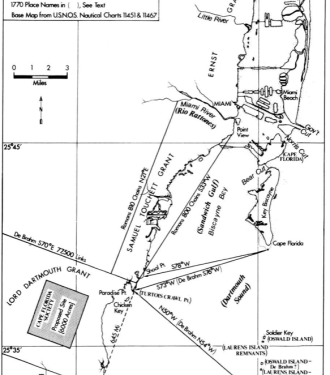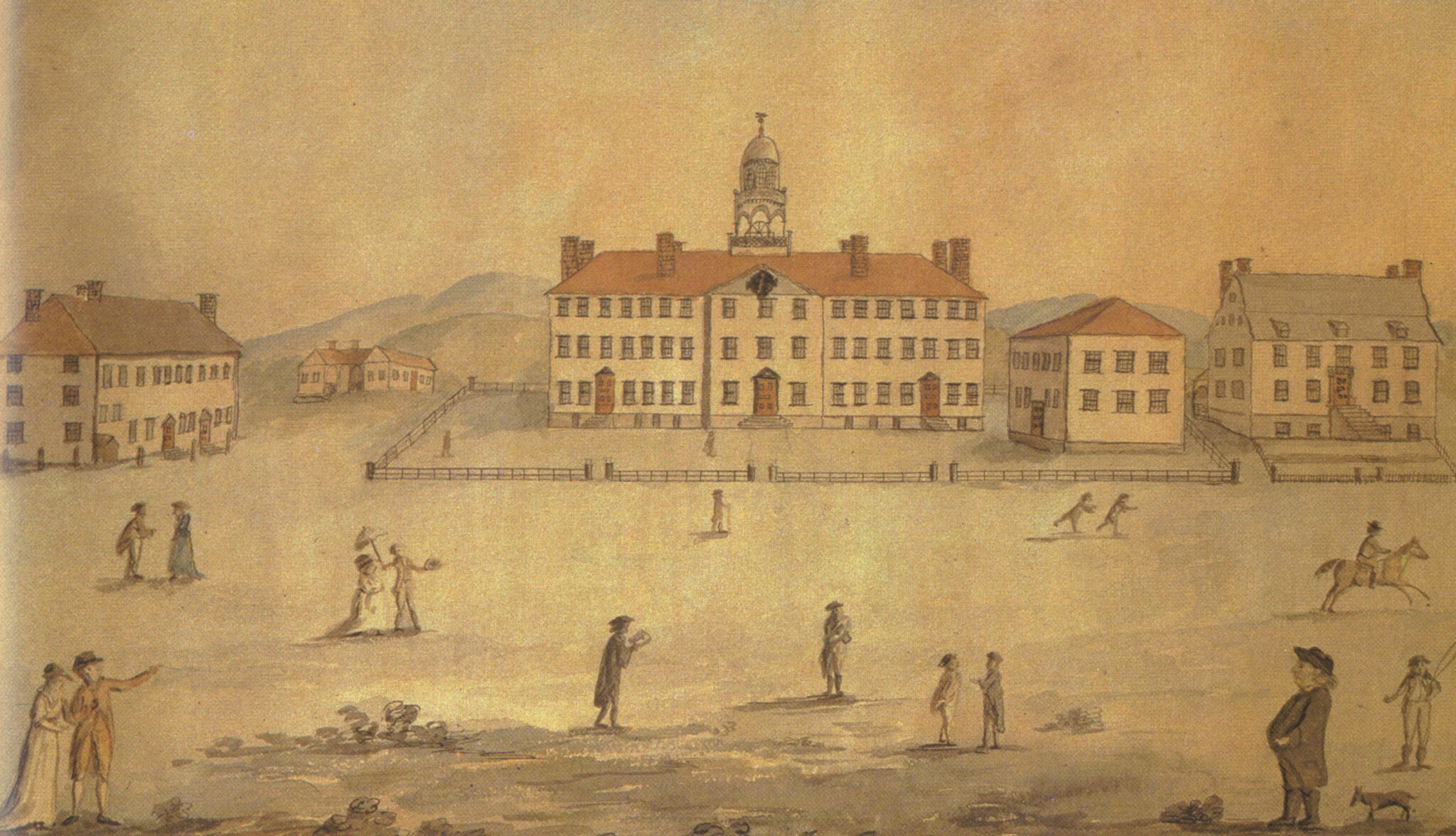The Second Earl of Dartmouth (1731-1801) held a number of public offices, including Secretary of State for the American Colonies.
William Legge, the Second Earl of Dartmouth (1731-1801), held a number of public offices, serving as a member of the House of Lords; the first president of the Board of Trade & Plantations; Secretary of State for the American Colonies; and as an appointee to the Privy Council, the private advisors to the Crown.1 As a member of the Board of Trade, a kind of clearinghouse for colonial complaints about British policies, Legge was perceived as sympathetic to American interests, in part because he supported repeal of the Stamp Act. That said, Legge’s loyalties always remained with the Crown, and his policies were meant to quell the dissent and conflicts that would eventually lead to the Revolution.2
In compensation for his service, Legge received a royal grant of 100,000 acres along Biscayne Bay’s western shores in the Florida Territory, with the expectation that he would recruit 20 Protestant families from England and their allies to settle the area.3 Surveys described the grant as prime plantation land, containing groves of pine, oak, elm, elder, cypress and other trees, as well as sites for indigo, rice, sugar, and produce for trade.4 The planned settlement and cultivation of the grant would dispossess, displace, enslave, and trade the Indigenous populations of the southeast, including the Creek, Cherokee, Tequesta of Biscayne Bay, and unconquered Seminole. Legge’s detailed plan for the grant included provisions for enslavement, stating that "all Purchases be they Negroes or Negresses, and others of such kind as to be for the usage of the Society, will be made by the Directors from the products of the Subscriptions, and will be shared.”5 Ultimately, the rebellion prevented the plantation’s development, and the territory reverted to Spanish ownership.
Portrait of William Legge, Second Earl of Dartmouth, by Pompeo Batoni

Map of land in Florida Territory granted to William Legge, 2nd Earl of Dartmouth, in 1770
Legge’s association with the college named in his honor was not a happy one. As president of the trust that was formed to oversee funds raised by Reverends Samson Occom and Nathaniel Whitaker on their tour of Great Britain, Legge was invaluable to the duo’s efforts.6 His name lent both credibility and influence to the tour, though Legge himself personally donated little in the way of money.7 With his reputation on the line, however, Legge was dismayed to discover not only that Eleazar Wheelock had acquired a charter for a college—not the promised Indian school for which the funds were raised—without notifying the members of the trust, but that the new college had been named after Legge without his knowledge or consent.8 Wheelock had made a powerful enemy; apparently Legge never communicated with Wheelock again,9 and the latter’s subterfuge resulted in more than 150 years of financial accountability to the Trust.10
Notes
1. "William Legge, Second Earl of Dartmouth (1731-1801)," Oxford Dictionary of National Biography. Also see Benjamin Franklin Stevens, The Manuscripts of the Earl of Dartmouth, Vol II. American Papers (London: Eyre and Spottiswoode, 1887).
2. B. D. Bargar, Lord Dartmouth and the American Revolution (Columbia: University of South Carolina Press), 1965; Greg Aaron, “Lord Dartmouth’s War of Words, 1775," Journal of the American Revolution, November 17, 2020; and Bob Ruppert, “The Earl of Dartmouth: Secretary of State for the Colonies, Third Year: August 1774-November 1775,” Journal of the American Revolution, January 15, 2019.
3. Privy Council and Privy Council Office: Miscellaneous Unbound Papers. Colonial Papers (PC1/58/1-PC1/66/40). East Florida: Report of Board of Trade for granting 100,000 acres to the Earl of Dartmouth and his four sons. PC 1/60/9. December 1770. Kew, UK: The National Archives.
4. "William Legge, Second Earl of Dartmouth (1731-1801)," Oxford Dictionary of National Biography. Also see Benjamin Franklin Stevens, The Manuscripts of the Earl of Dartmouth, Vol II. American Papers (London: Eyre and Spottiswoode, 1887).
5. Roland E. Chardon, “The Cape Florida Society of 1773.” Tequesta: The Journal of the Historical Association of Southern Florida 35 (1975): 6. Also see Appendix for further commentary about slaves, p. 33-34.
6. Samson Occom, Journal, 1765 November 21 – July 22, 1766.
7. Leon Burr Richardson, History of Dartmouth College (Hanover, N.H.: Dartmouth College Publications, 1832), p. 66.
8. Colin G. Calloway, “Samson Occom and the Indian Money, 1765–75,” Chapter 2 in The Indian History of an American Institution: Native Americans and Dartmouth (Hanover, NH: Dartmouth College Press, 2010), pp. 15-26. Also see Samson Occom, Letter to Eleazar Wheelock, 1771 July 24.
9. "William Legge, Second Earl of Dartmouth (1731-1801)," Oxford Dictionary of National Biography. Also see Benjamin Franklin Stevens, The Manuscripts of the Earl of Dartmouth, Vol II. American Papers (London: Eyre and Spottiswoode, 1887).
10. The Trust in England, Letter to Eleazar Wheelock, 1772 May 1. Also see Society in Scotland for Propagating Christian Knowledge, Records, 1794–1892 Ms. DA-42; and Moor’s Indian Charity School Records, 1760–1915. Ms DA 403. Hanover, NH: Rauner Special Collections Library, Dartmouth College.
